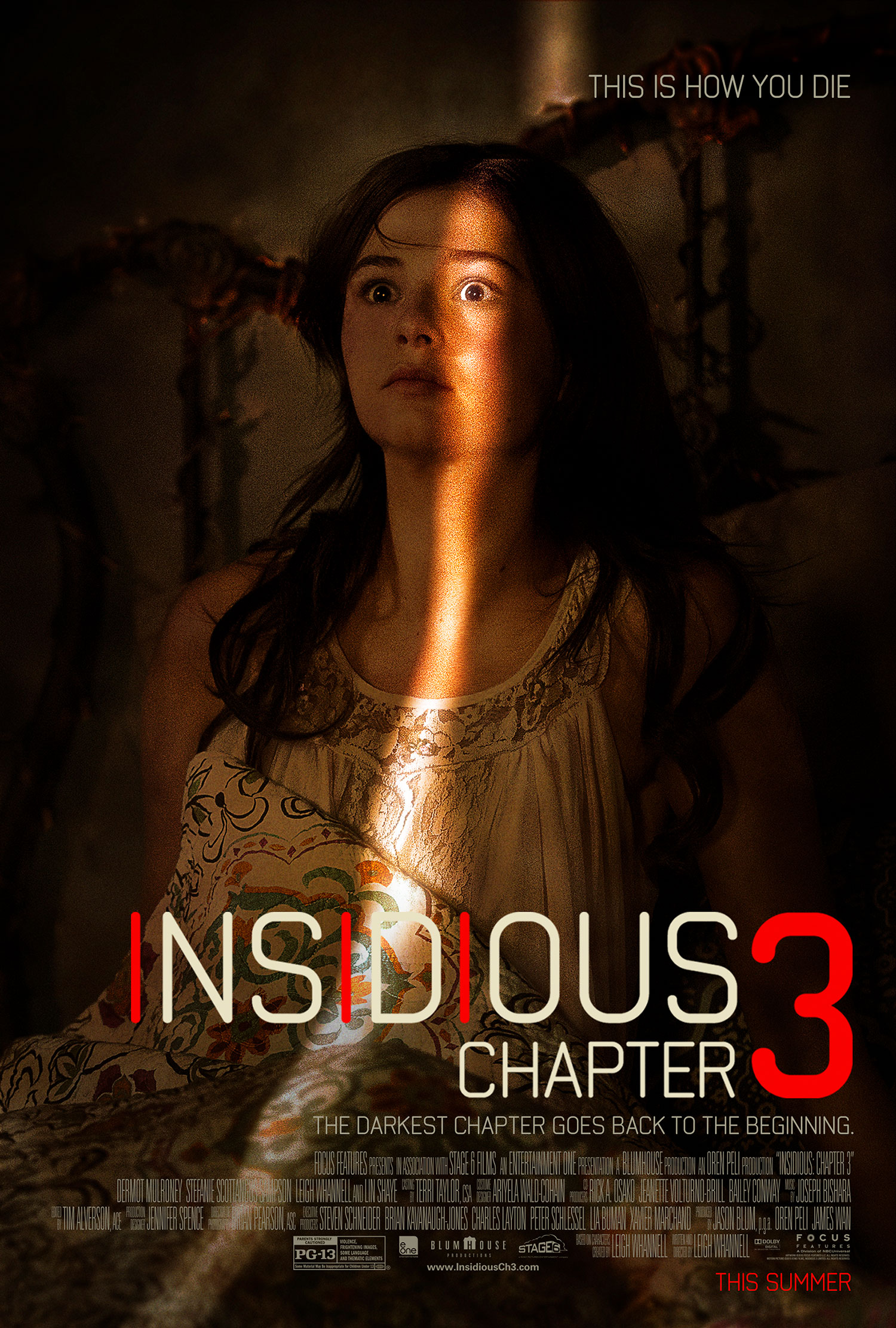Leigh Whannell has had one of the most impressive runs in horror films so far this century. He’s responsible, with James Wan, for the Saw and Insidious franchises, and has even managed to amass over thirty acting credits. Insidious: Chapter 3, from 2015, is his first time in the director’s chair. A prequel to the first two Insidious films, the film doesn’t feature the Lambert family this time around, but Lin Shaye, Angus Sampson, and Whannell all reprise the characters they played.
Quinn Brenner (Stefanie Scott) is a teenaged girl who seeks out Elise Rainier (Shaye) for a psychic reading. Quinn’s mother died from cancer a little while ago and Quinn has been trying on her own to contact her. Quinn hopes that Elise can make definitive contact with her mother, and help set her grieving mind at ease. Elise is reluctant, because her psychic talent has recently taken a dark turn. But, she takes enough of a peek into the supernatural to warn Quinn against trying to contact her mother. Because, Elise says, when one calls out to a dead person, all the dead can hear it.
This opener is a great setup for the film. It’s a meticulous scene where two characters, unknown to each other, supply all the background the audience will need. It’s character development done efficiently, and with a studied tension that informs the rest of the film.
Next, we meet Quinn’s surviving family members. They are her father, Sean (Dermot Mulroney), and little brother, Alex (Tate Berney). The three of them live in a very cool pre-war apartment building. Sean makes his living as a tradesman, and the task of raising two  kids on his own is a huge strain. Alex, meanwhile, is on the periphery of the film, and never makes a meaningful contribution to the story.
kids on his own is a huge strain. Alex, meanwhile, is on the periphery of the film, and never makes a meaningful contribution to the story.
The first night after hearing Elise’s warning, Quinn ignores it. Whannell proves right there that he can write teenagers. It is not Quinn’s mother whom she has been contacting. It is an evil spirit colloquially called The Man Who Can’t Breathe (Michael Reid MacKay), because he wears a medical oxygen mask.
Quinn is terrorized by this ghost, for the same familiar reasons that populate ghost flicks, going back to Poltergeist. Living energy has value to the dead, and The Man wants Quinn’s.
Not long after, Elise decides to help Quinn rid herself of The Man, even if it means going back into the dark realm of The Further, and endangering her own life.
There’s the setup, and what remains for Whannell is to deploy storytelling and horror trickery to get the audience to denouement, ideally scared out of their wits. The first two Insidious films were impressive in the way they were weaved into a single story that crossed time and space. Whannell’s ambitions weren’t as high with this film. The story is a much more conventional ghost tale. It’s a workaday story designed to move a film forward, but its familiarity places all of the burden for the film’s entertainment on the scares.
Here, Whannell shows talent for building a scene. Viewers should be all puckered up for the moments these scenes climax. The payoffs for these scenes, however, are jump scares. Every single one of them. They will make a viewer jump. Whannell is very good at jump scares. But it becomes such a predictable end to the scary moments that they end up losing power once a viewer knows they’re coming. They also ruin all that hard work Whannell does in the buildup. It’s as if Whannell knows how to film 99% of a horror flick, but in those instances when a viewer is on the hook and primed to have the bejesus scared out of them, he has resort to the laziest methods of frightening a viewer. It would be very frustrating if the buildup wasn’t handled so well.
Whannell’s stories are a combination of cleverness and cliché, and Insidious 3 is no exception. He takes horror tropes with which audiences are well familiar, and applies craft to try and take those tropes further. It’s kind of like a chef dressing up a burger.
